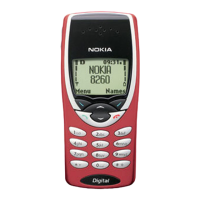8260 User Guide version v. 0.06 [ 112 ]4/21/00
When making an emergency call, remember to give all of the necessary
information as accurately as possible. Remember that your wireless phone
might be the only means of communication at the scene of an accident—
do not terminate the call until given permission to do so.
Radio frequency (RF) signals
Your wireless handheld portable telephone is a low-power radio
transmitter and receiver. When it is on, it receives and sends out radio
frequency (RF) signals.
In August 1996, the Federal Communications Commission (FCC) adopted
RF exposure guidelines that included safety levels for handheld wireless
phones. Those guidelines are consistent with safety standards previously
set by both U.S. and international standards bodies:
ANSI C95.1 (1992)*, NCRP Report 86 (1986)*, ICNIRP (1996)*.
Those standards were based on comprehensive and periodic evaluations
of the relevant scientific literature. For example, over 120 scientists,
engineers, and physicians from universities, government health agencies
and industry reviewed the available body of research to develop the ANSI
Standard (C95.1).
The design of your phone complies with the FCC guidelines (and those
standards).
To maintain compliance with FCC RF exposure guidelines, use only Nokia
approved accessories. When carrying the phone while it is on, place the
phone in Nokia approved belt clip, carrying case or holster, or place the
phone in a pocket so that the keypad faces your body.
*American National Standards Institute, National Council on Radiation
Protection and Measurements; International Commission on Non-
Ionizing Radiation Protection.

